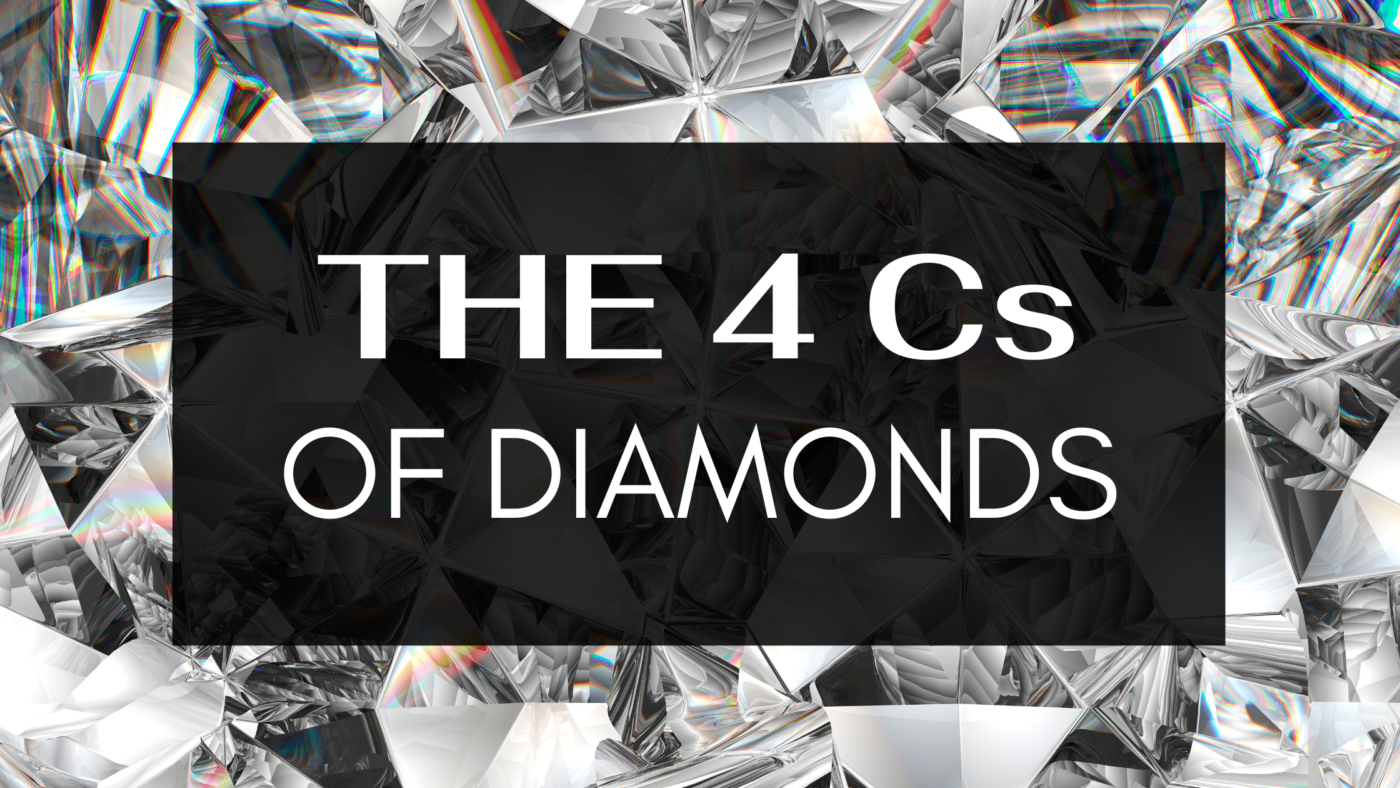In the jewelry world, we judge diamonds by using the four Cs: carat, color, clarity, and cut. Each affects the price, so read on to learn more about each C!
Four Cs: Carat
Carat weight is arguably the most important of the four Cs: it’s how big that rock is!
Carat (not to be confused with karat that refers to gold purity) measures the weight of diamonds and other gemstones. One metric carat is equal to 0.2 grams.
Color
Next up in our guide to the four Cs is Color. We measure a diamond’s color on a scale from D to Z, with D being the whitest and Z being brown. So, when you think about it, the color evaluation of a diamond is actually based on the absence of color. According to GIA, “a chemically pure and structurally perfect diamond has no hue, like a drop of water, and consequently, a higher value.” Keep in mind, some people like colored diamonds, and they’re just as gorgeous! But, if you’re looking for a traditional, bright white diamond, you want to get as close to D as your budget will allow.
Clarity
Just as our faces get blemishes, so do diamonds. As GIA explains it, “natural diamonds are the result of carbon exposed to tremendous heat and pressure deep within the earth. The process can result in various internal characteristics called “inclusions” and external characteristics called “blemishes.” Unlike humans, however, some diamonds really are perfect. We refer to diamonds with the best clarity as flawless. After that, the scale gets a little tricky. GIA has a standardized scale that breaks it down:
- Flawless (FL) No inclusions and no blemishes visible under 10x magnification
- Internally Flawless (IF) No inclusions visible under 10x magnification
- Very, Very Slightly Included (VVS1 and VVS2) Inclusions so slight they are difficult for a skilled grader to see under 10x magnification.
- Very Slightly Included (VS1 and VS2) Inclusions are observed with effort under 10x magnification but can be characterized as minor.
- Slightly Included (SI1 and SI2) Inclusions are observed with effort under 10x magnification.
- Included (I1, I2, and I3) Inclusions are obvious under 10x magnification.
Clarity should be part of your decision-making, but remember, not everyone is going to be looking at your diamond with a jeweler’s loupe. Many diamonds have imperfections, and that can be part of what makes them unique.
Cut
Diamonds don’t come out of the ground shining as they do on a ring — it takes a skilled artisan to cut them and make them sparkle. A diamond’s cut (not to be confused with shape) refers to the arrangement of facets needed to create an attractive face-up appearance. In addition, it fuels the diamond’s sparkle.

